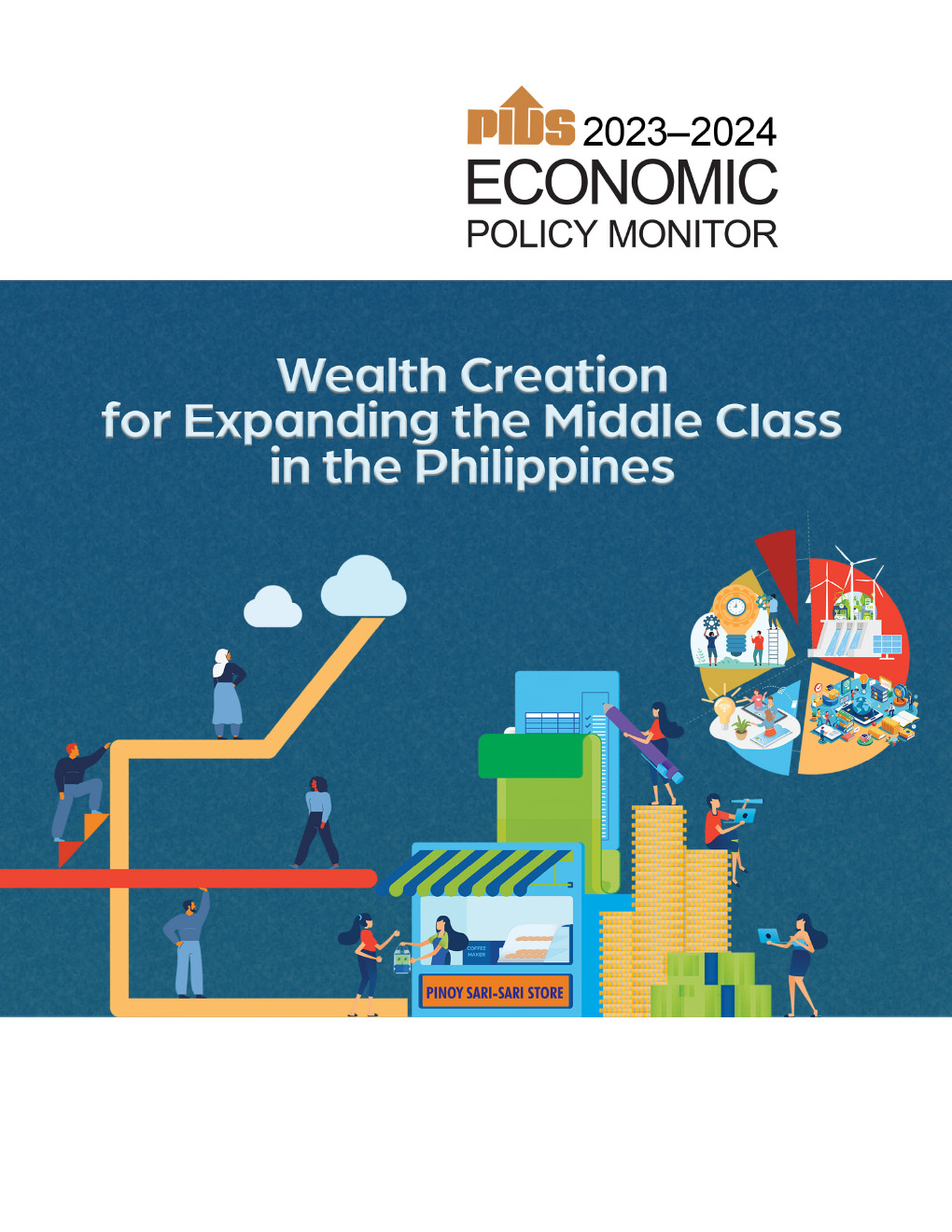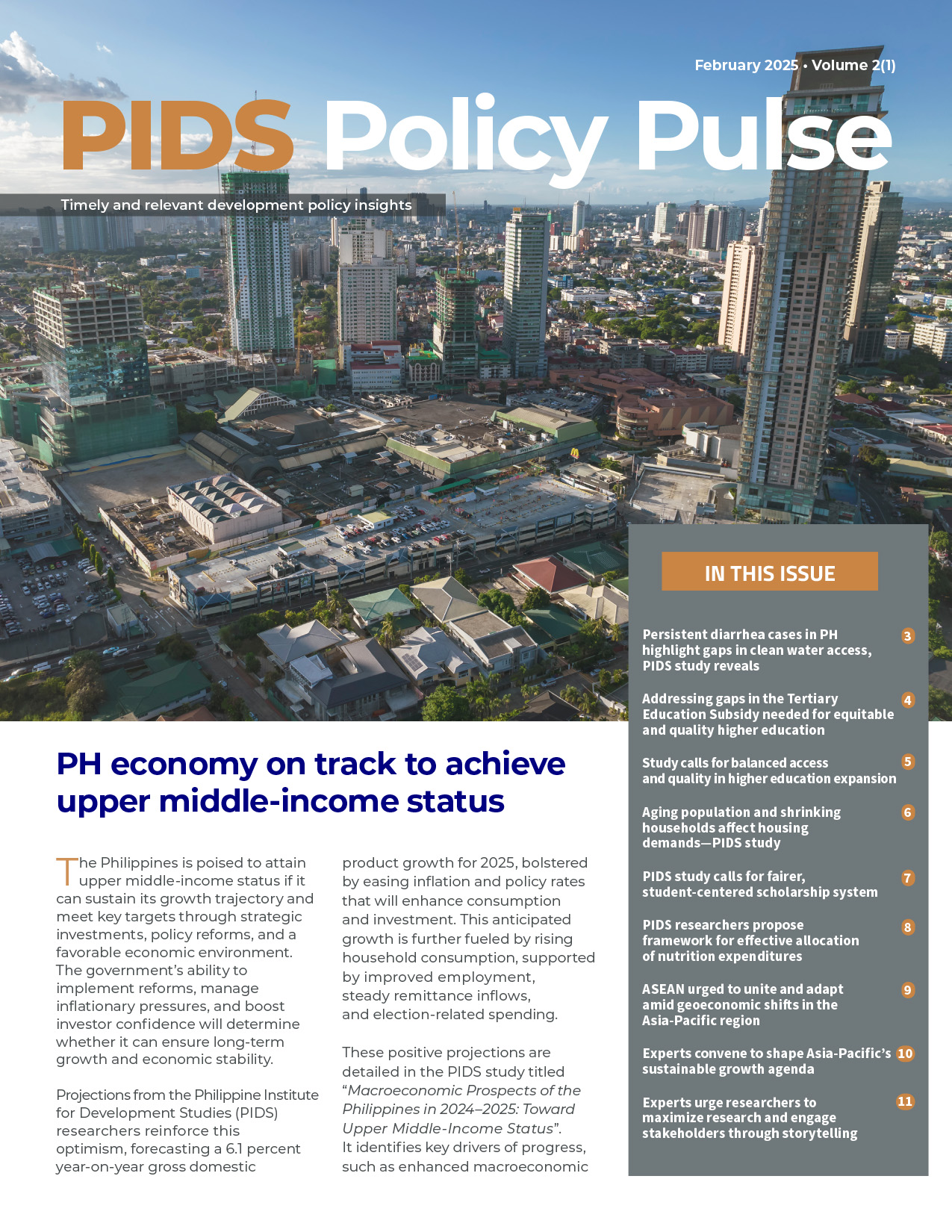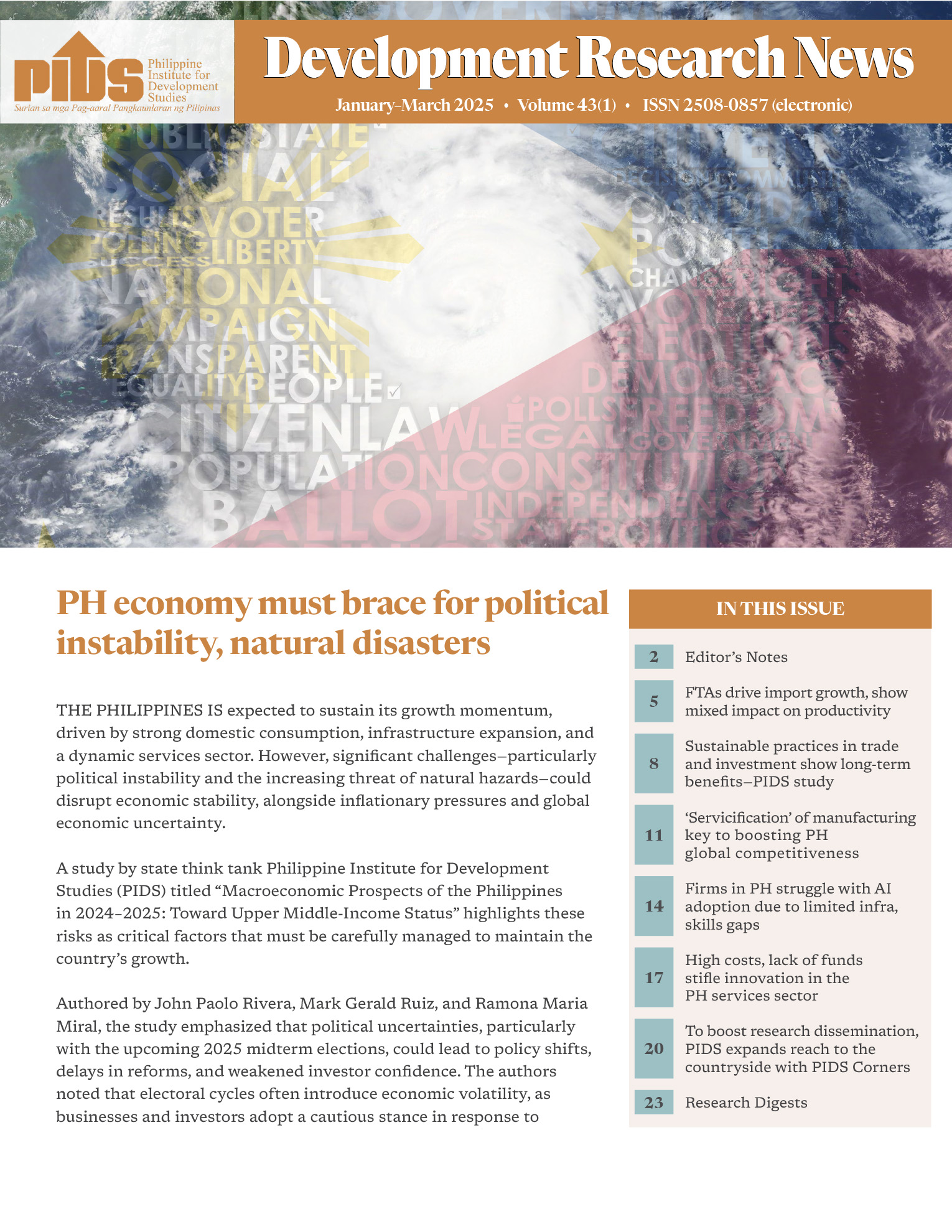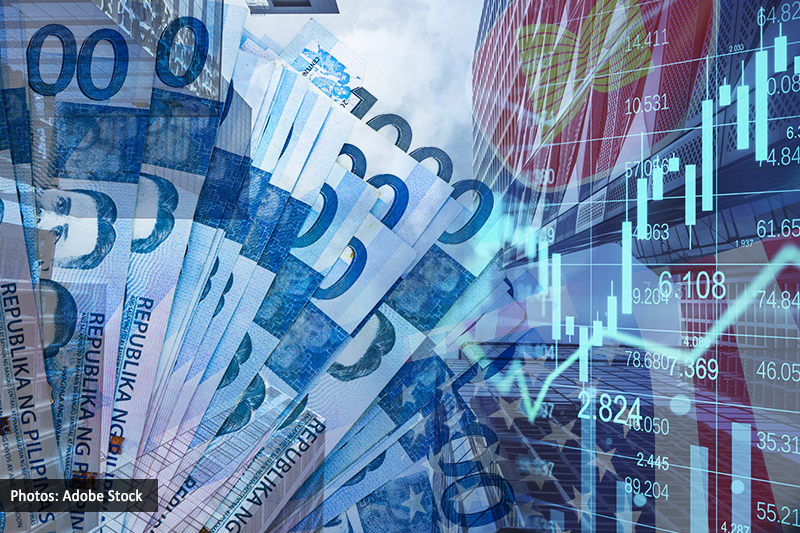THE economy’s growth next year may fall short of the government’s targets, according to the Philippine Institute for Development Studies (PIDS).
In a discussion paper, a team led by PIDS Senior Research Fellow John Paolo R. Rivera estimated that the economy may post a GDP growth of 6.1 percent next year. The GDP target is 6.5 to 7.5 percent next year.
The paper also said that inflation may be higher than the government’s targets. PIDS estimates that inflation could be 3 to 4 percent next year, higher than the government’s 2- 4 percent.
“This is anchored on the dynamics of various forces on the demand- side, particularly the expectations of easing inflation and policy rates that will reinforce both consumption and investment activities of the private and public sectors,” PIDS said.
“Growth is also supported by enhanced household consumption driven by improving employment rates and steady inf low of remittances from abroad, and election spending in the first half of 2025,” it added.
PIDS said the national government’s spending for infrastructure development is also expected to continue.
The economists said it will be strengthened by the recovery of merchandise exports particularly electronic products, and the resiliency of services exports particularly tourism and BPO.
Meanwhile, higher oil prices, wages, transport fare, and power rate, as well as the depreciation of the PHP against the USD, will lead to higher inflation.
The country is a net food and oil importer. Food has a weight of 34.78 percent of the All income and 51.38 percent of bottom 30 percent households in the Consumer Price Index (CPI).
“Food prices [ are] the main driver of high inflation due to the impacts of supply- chain constraints and disruptions to agricultural production due to natural calamities that hit the economy in 2024 (i.e., El Niño phenomenon, African Swine Flu [ ASF], typhoons and flooding, volcanic eruptions),” PIDS added.
Nonetheless, PIDS said the recovery of the agricultural and production sectors, as well as timely arrival of imported rice slapped with lower tariffs, will help ease inflation.
Further, PIDS said, efforts to alleviate supply- chain constraints, and the improvement in the exchange rate will also lead to lower commodity prices.
“These may be hampered by the excessive increase in consumption spending due to holiday and election seasons, controlled exports of trading partners due to their internal constraints and deteriorating geopolitical threats along trade routes that disrupt the downtrend of inflation in the Philippines,” PIDS, however, said.
Earlier, economic growth slowed to 5.2 percent, according to the Philippine Statistics Authority (PSA). This is slower than the 6.4- percent growth in the second quarter and the 6 percent in the third quarter of last year.
This is the slowest growth of the Philippine economy since the 4.3- percent growth posted in the second quarter last year.
Balisacan said this placed the country’s GDP growth at 5.8 percent in the first three quarters of 2024 “slightly below” the government’s full year target of 6 percent this year.
He said the economy needs to grow by 6.5 percent to attain the government’s targets this year. But the government is confident that holiday spending, among others, will help boost the country’s economic performance.












